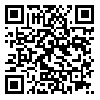Volume 17, Issue 3 (12-2019)
sjsph 2019, 17(3): 295-306 |
Back to browse issues page
Download citation:
BibTeX | RIS | EndNote | Medlars | ProCite | Reference Manager | RefWorks
Send citation to:



BibTeX | RIS | EndNote | Medlars | ProCite | Reference Manager | RefWorks
Send citation to:
Dehghankar L, Hajikarimbaba M, Panahi R. Health Literacy and Factors Related to It Among Female Students of Imam Khomeini International University in Qazvin, Iran. sjsph 2019; 17 (3) :295-306
URL: http://sjsph.tums.ac.ir/article-1-5797-en.html
URL: http://sjsph.tums.ac.ir/article-1-5797-en.html
1- MSc. Instructor, Department of Nursing, Social Determinants of Health Research Center, Research Institute for Prevention of Non-Communicable Diseases, School of Nursing and Midwifery, Qazvin University of Medical Sciences, Qazvin, Iran
2- MSc. Student, Student Research Committee, School of Nursing and Midwifery, Qazvin University of Medical Sciences, Qazvin, Iran
3- PhD. School of Medical Sciences, Tarbiat Modares University, Tehran, Iran ,Peimanpanahi63@Yahoo.com
2- MSc. Student, Student Research Committee, School of Nursing and Midwifery, Qazvin University of Medical Sciences, Qazvin, Iran
3- PhD. School of Medical Sciences, Tarbiat Modares University, Tehran, Iran ,
Abstract: (4590 Views)
Background and Aim: Considering the central role of low health literacy (HL) in causing health inequalities and the fast growth of university student populations, this study aimed to determine the HL and its related factors among university students.
Materials and Methods: This was a descriptive-analytic cross-sectional study including 375 female students of Imam Khomeini International University in Qazvin, Iran in 2019 selected using the stratified random sampling method. The data-collecting tools included a demographic and background questionnaire and an Iranian adult HL assessment questionnaire. The SPSS 23 software was used for data analysis, the statistical tests being descriptive and logistic regression tests.
Results: Data analysis showed that 17 (4.5%) of the students had inadequate, 112 (29.9%) insufficient, 188 (50.1%) adequate, and 58 (15.5%) excellent HL, the mean HL percentage (± SD) being 70.80 (± 12.49). Based on logistic regression analysis, there was a statistically significant association between HL and physical activity (p =0.039), such that the chance of having good HL among the students with physical activity on most days was 2.097 times that of those with regular daily physical activity. A significant relationship was also found between HL and employment (p =0.042), such that the chance of having good HL among the employed students was 0.534 times that of unemployed students.
Conclusion: Considering the low health literacy rate among the students with low physical activity and those who are unemployed, it is recommended to pay more attention to these students when designing educational programs to increase their health literacy.
Materials and Methods: This was a descriptive-analytic cross-sectional study including 375 female students of Imam Khomeini International University in Qazvin, Iran in 2019 selected using the stratified random sampling method. The data-collecting tools included a demographic and background questionnaire and an Iranian adult HL assessment questionnaire. The SPSS 23 software was used for data analysis, the statistical tests being descriptive and logistic regression tests.
Results: Data analysis showed that 17 (4.5%) of the students had inadequate, 112 (29.9%) insufficient, 188 (50.1%) adequate, and 58 (15.5%) excellent HL, the mean HL percentage (± SD) being 70.80 (± 12.49). Based on logistic regression analysis, there was a statistically significant association between HL and physical activity (p =0.039), such that the chance of having good HL among the students with physical activity on most days was 2.097 times that of those with regular daily physical activity. A significant relationship was also found between HL and employment (p =0.042), such that the chance of having good HL among the employed students was 0.534 times that of unemployed students.
Conclusion: Considering the low health literacy rate among the students with low physical activity and those who are unemployed, it is recommended to pay more attention to these students when designing educational programs to increase their health literacy.
Type of Study: Research |
Subject:
Public Health
Received: 2019/12/18 | Accepted: 2019/12/18 | Published: 2019/12/18
Received: 2019/12/18 | Accepted: 2019/12/18 | Published: 2019/12/18
Send email to the article author
| Rights and permissions | |
 |
This work is licensed under a Creative Commons Attribution-NonCommercial 4.0 International License. |





